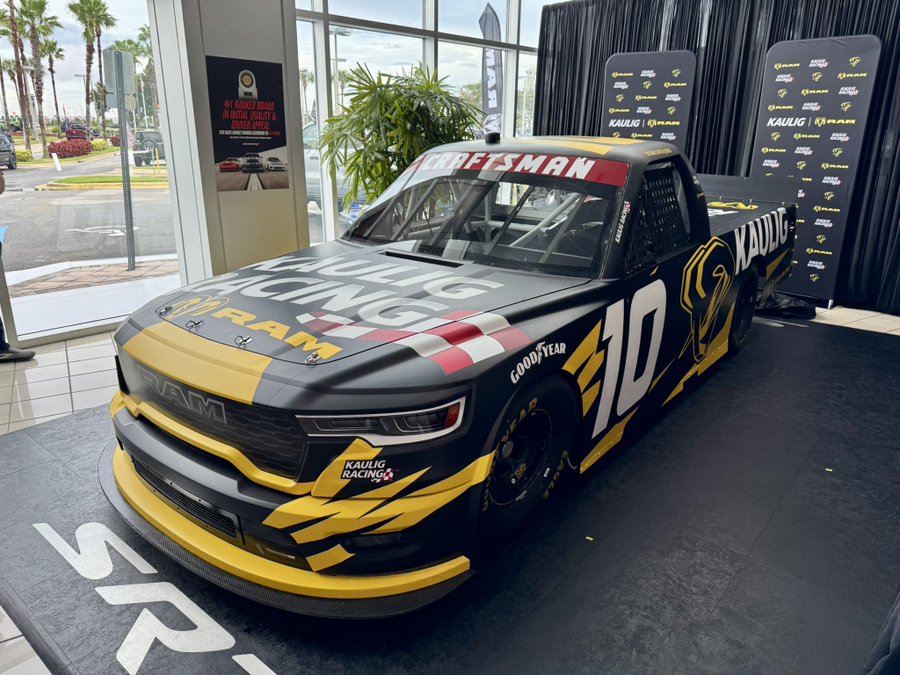

The 2025 NASCAR season has just ended, and discussions around the 2026 campaign are already louder than a restart at Martinsville. And why not? After all, NASCAR has planned a string of changes for the upcoming season. Big changes! Firstly, the championship finale is leaving the desert (bye-bye Phoenix) and heading back to Homestead-Miami, a track many still consider the purest test of a title run.
Watch What’s Trending Now!
Then, the brand-new street course at Naval Base Coronado in San Diego is set to make its debut. Chicagoland Speedway, once left for dead, is officially back on the schedule. And of course, the playoff format shake-up means the postseason will look very different. However, nothing has the drivers (and the fans) excited than the increase in car horsepower. And now, with NASCAR changing its OEM testing rules, the sport is gearing up for one of its most dramatic competitive resets in years.
ADVERTISEMENT
New OEM testing rules for the 2026 NASCAR Cup Series
Veteran NASCAR journalist Bob Pockrass recently shared NASCAR’s new OEM testing rules for 2026 that apply to all three national series. Upon inspection, these reveal a significant step toward regulating how manufacturers prepare their race cars, ensuring fair competition and cost control. You might be aware of how crucial OEM testing is in the NASCAR world.
It allows manufacturers to fine-tune their vehicles’ aerodynamics and performance within NASCAR’s parameters before the season starts. This testing is closely monitored by officials to prevent any undue advantage to any particular organization. As per the new rules, New OEMs (defined as those not competing in the past five seasons) like Dodge are allowed a maximum of three testing sessions.
Moreover, each test can last no more than two consecutive days, accommodating inclement weather with flexibility. Testing must be completed by March 1 of the season year. To maintain fairness and scheduling integrity, testing is prohibited at any facility that has been repaved or is new to the schedule, such as the new San Diego street course at Naval Base Coronado, or at tracks within 60 days of a race event.
ADVERTISEMENT
Testing policy for new manufacturer part of 2026 rules released today (charter requires technical rules by Nov 15). Also the A-post flaps used at superspeedways late this year will be used at all tracks (designed to prevent flips). Any playoff changes to come on later date: pic.twitter.com/IOuurmsHqH
— Bob Pockrass (@bobpockrass) November 14, 2025
Finally, each testing session is limited to a maximum of three affiliated organizations, allowing no more than two cars each. This restriction helps control resources and ensures no single group dominates testing advantages. These rules aim to balance innovation and competition among OEMs while maintaining NASCAR’s commitment to competitive racing and cost efficiency.
ADVERTISEMENT
But while testing policies help shape how manufacturers get ready, the real buzz is about what they’re preparing for. And that’s where the next bombshell drops! NASCAR has officially revealed the new aero and horsepower package set to redefine the 2026 Cup Series.
New tracks approved for the 750 HP package
Moreover, Pockrass also shared details about the 17 tracks that will utilize the new 750-horsepower package for the 2026 Cup Series season. This includes road courses and oval tracks under 1.5 miles, such as Bowman Gray Stadium, Bristol, Charlotte road course, Circuit of the Americas, Darlington, Dover, Phoenix Raceway, Martinsville, Watkins Glen, Nashville, San Diego street course, Sonoma, North Wilkesboro, Iowa Speedway, Richmond, New Hampshire, and the World Wide Technology Raceway.
ADVERTISEMENT
The reason behind increasing horsepower from 670 to 750 is to enhance the racing experience by boosting speed, encouraging tire management, and creating more passing opportunities. NASCAR president Steve O’Donnell explained that the decision to limit the horsepower to 750 helps balance performance improvements without pushing teams into costly and technically demanding engine overhauls.
“If you went beyond 750, we looked at almost $40-50 million cost to the industry. And so if you look at our job, it’s, yeah, you want to make a call right away. But you’ve got to think about the out years,” O’Donnell stated. Alongside horsepower, aerodynamic packages are tuned to complement this power boost by improving handling and competitiveness.
Meanwhile, NASCAR executive vice president John Probst acknowledged that the sport’s strongest Cup racing currently comes from the intermediate tracks. So, when developing the new package, officials were careful not to disrupt what was already working well.
ADVERTISEMENT
“It is a package. It’s the downforce, it’s the drag, it’s the power, it’s the tire wear, all together that’s creating those good shows. So, don’t want to just change one for the sake of changing it and then find out later that we did something bad there and hurt the on-track product. So we’ll proceed with caution,” he said.
The combined effect of enhanced horsepower and optimized aerodynamics aims to return a rawer, more challenging style of racing for drivers, while increasing excitement for fans. This package is seen as a crucial step in maintaining NASCAR’s competitive edge and evolving the sport’s technical landscape for the future.
NASCAR plans to work closely with Goodyear to refine tire compounds that can handle the added power, ensuring safety and performance stay aligned with the sport’s goals. The 750 HP package marks an important milestone for NASCAR’s 2026 season. Are you excited about the new horsepower and aero-packages? Do let us know in the comments.
ADVERTISEMENT
ADVERTISEMENT
ADVERTISEMENT

